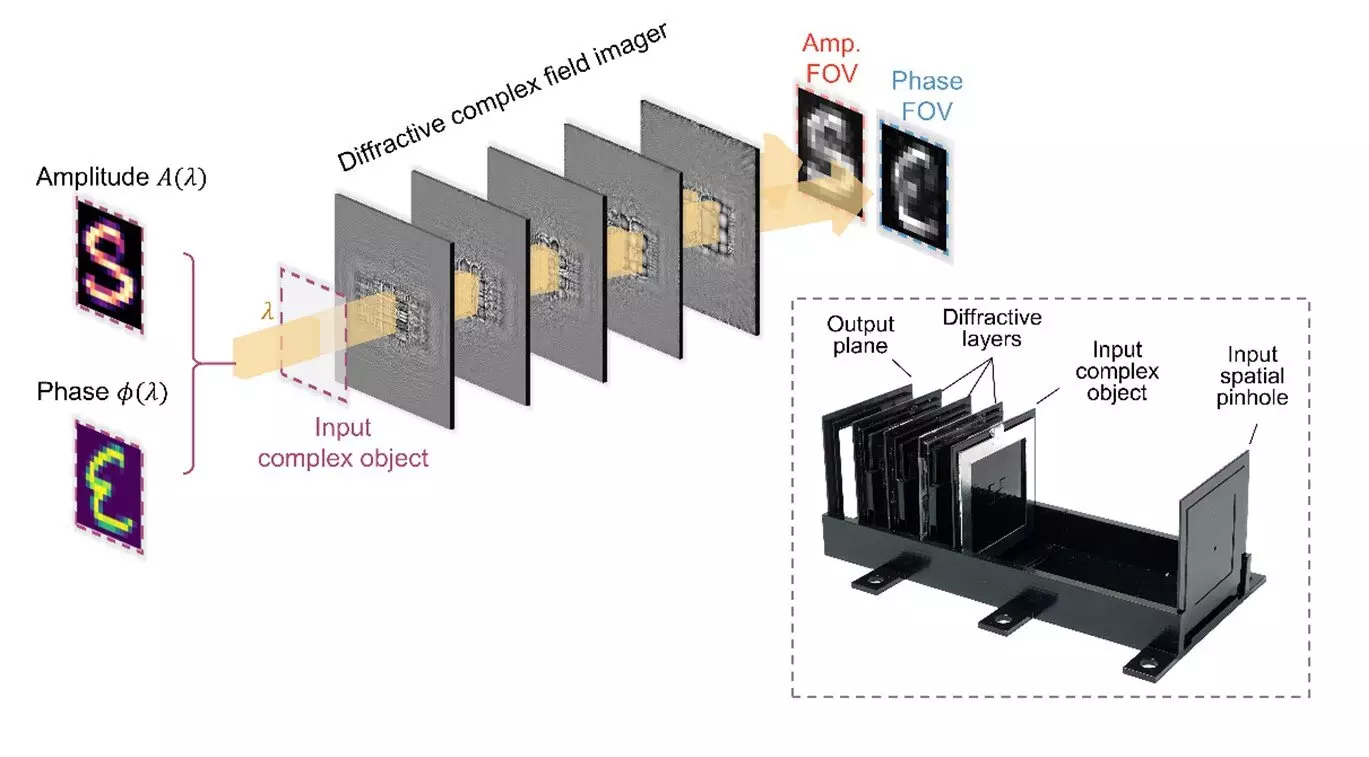The recent development of an all-optical complex field imager at the University of California, Los Angeles (UCLA) marks a significant milestone in optical imaging technology. This innovative device has the capability to capture both amplitude and phase information of optical fields without the need for digital processing. Traditionally, optical imaging technologies have relied on intensity-based sensors that can only capture the amplitude of light, neglecting crucial phase information. However, with the introduction of this new complex field imager, a wide array of fields such as biomedical imaging, security, sensing, and material science are poised to undergo a transformation.
Led by Professor Aydogan Ozcan, the team at UCLA developed a complex field imager that utilizes deep learning-optimized diffractive surfaces to modulate incoming complex fields. By creating two independent imaging channels that transform the amplitude and phase of input fields into intensity distributions on the sensor plane, this innovative device eliminates the need for digital reconstruction algorithms. The spatially engineered diffractive surfaces within the imager perform amplitude-to-amplitude and phase-to-intensity transformations, allowing for the direct measurement of amplitude and phase profiles of input complex fields.
The implications of this breakthrough technology are vast and far-reaching. In the biomedical field, the complex field imager can revolutionize real-time, non-invasive imaging of tissues and cells, providing critical insights during medical procedures. Its compact design also makes it suitable for integration into endoscopic devices and miniature microscopes, thus potentially advancing point-of-care diagnostics and intraoperative imaging. Furthermore, in environmental monitoring, the imager can facilitate the development of portable lab-on-a-chip sensors for rapid detection of microorganisms and pollutants.
The industrial applications of the complex field imager are equally promising. Its ability to capture detailed structural information without the need for bulky equipment or extensive computational resources makes it an invaluable asset in quality control and material analysis. The imager can be utilized for the rapid inspection of materials, streamlining the process of environmental assessment and quality control procedures. The compact nature of the device also lends itself to on-site quantitative analysis, making it an ideal tool for various industrial applications.
The development of the all-optical complex field imager signifies a significant advancement in the field of optical imaging. By enabling the direct capture of both amplitude and phase information without the need for digital processing, this technology simplifies the imaging process and expands the range of potential applications. As the research team at UCLA continues to refine and expand upon their designs, the impact of this innovation is poised to grow, offering new opportunities for scientific research and practical applications across various fields. With the potential to revolutionize fields such as biomedical imaging, security, sensing, and material science, the future of optical imaging looks bright thanks to this groundbreaking technology.


Leave a Reply
You must be logged in to post a comment.